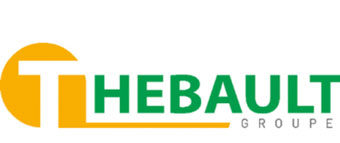Technical characteristics of plywood
Plywoods are made from rotary cut veneers or plies bonded together by a hot press laminating. The grain direction in adjacent plies is most of the time at right angle.
- The TEBOPLY range includes plywood products made from Okoume veneers ;
- The TEBOPIN range all plywood products made from Pine veneers ;
- The TEBOPLUS range regroups all plywood products made from Poplar veneers.
Technical characteristics of plywood according to the harmonized standard EN 13986
Standard EN 13986 “Wood-based panels for use in construction” version 2004 determines the relevant characteristics as well as the appropriate test methods to establish the characteristics of these panels according to their use.
- Bonding classes
THEBAULT plywoods comply with the European standards EN 314-1 and 2, establishing three designations for use in dry, humid or exterior conditions
Class 1 – dry conditions
This classification is adapted for internal uses sheltered from water and humidity.
In such a case bonding type class 1 is relevant.
Class 2 – humid conditions
This classification is adapted for use in wet applications (e.g. under roofing underlayments) when the level of relative humidity is not supposed to exceed 85% or only very occasionally. This category of products is also suitable for use in exterior sheltered conditions or in case of short-term exposure to bad weather conditions (e.g. during work on site).
In such a case, bonding type class 2 or 3 relevant.
Class 3 – exterior conditions
These products are designed for use in unprotected external applications with prolonged exposure to the elements.
In such a case, bonding type class 3 is relevant.
- Services classes
The service class specifies the end uses for which plywood is suitable, in accordance with EN 636.
Class 1 – dry conditions
Use in dry conditions, bonding type class 1 in accordance with NF EN 636-1.
Class 2 – humid conditions
Use in humid conditions, bonding type class 2 in accordance with NF EN 636-2.
Class 3 – exterior conditions
Use in exterior conditions, bonding type class 3 in accordance with NF EN 636-3.
In case of uncertainty regarding the precise final end use of the plywood, it is recommended to presuppose that the plywood is going to be used in construction for a structural load bearing application.
In such a case the panels must demonstrate compliance with the Construction Product Directive (CPD) and EN 13986. CE marking is required in accordance with annex ZA of EN 13986 and characteristic values must be supplied for use in accordance with EN 1995 -1-1 Eurocode 5.
THEBAULT plywoods bearing the NF Extérieur CTB-X quality mark are manufactured to technical specifications which exceed the requirements for plywoods for exterior use such as defined in EN 636-3. Their bonding type conforms to class 3 in accordance with EN 314-2.
- Classification of the face veneers
THEBAULT plywoods are graded according to the appearance of their faces, following the requirements of EN 635-2 for Okoume and Poplar plywoods and EN 635-3 for Pine plywood.
- Density
The average density for plywoods manufactured by the THEBAULT group are estimated in accordance with EN 323 :
- Pine : 580 to 660 kg/m3
- Poplar : 400 to 500 kg/m3
- Okoume : 450 to 550 kg/m3
- Dimensional tolerances
The dimensional tolerances of our plywood panels are given in accordance with EN 315.
Dimensional variations which may be observed with plywood panels are specific to the nature of wood. Alike solid wood plywood reacts to changes in moisture content of the atmosphere. This is the reason why THEBAULT always recommends to allow plywood products to stabilise before installation in the atmospheric conditions where there are going to remain in use.
Products




